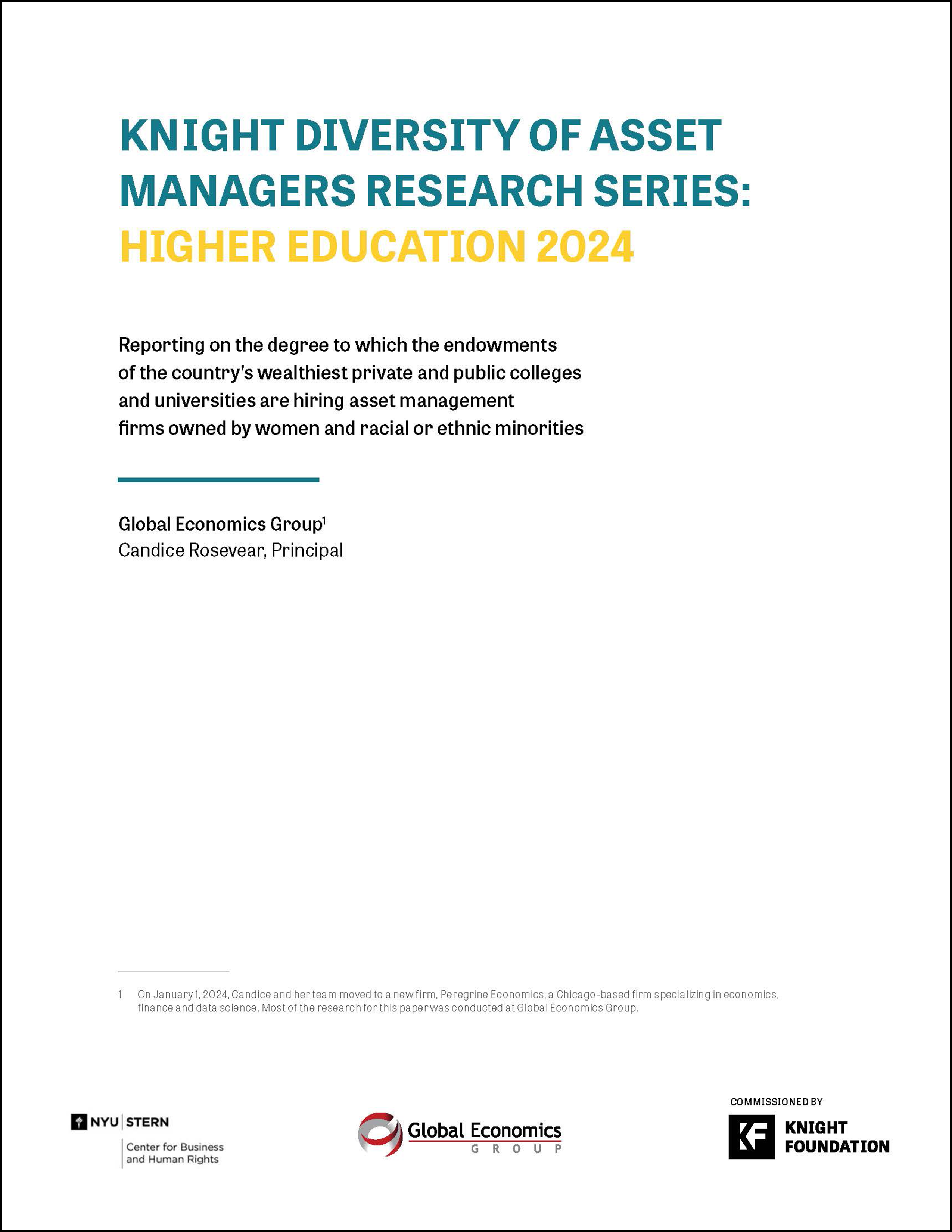Knight Diversity of Asset Managers Research Series: Higher Education 2024

April 2024
U.S. colleges and universities collectively hold over $800 billion in their endowments. Most schools are outspoken about promoting diversity, yet few of the wealthiest are willing to disclose how much, if any, of their endowments are managed by firms owned by women or minority-group members.
For this paper, the NYU Stern Center for Business and Human Rights partnered with Knight Foundation and Global Economics Group to gain insight into diversity of ownership among firms managing money for the 25 largest public and the 25 largest private university endowments. The paper builds on our 2022 interim report by providing additional and updated data, but 24 of the 50 schools eligible for the study still chose not to participate. Among the 18 schools that shared independently verifiable data, we found that a range of zero to 38.5% of their U.S.-based assets under management were invested with diverse-owned firms. However, given that fewer than half of the schools were willing to share full datasets for analysis, we cannot yet identify a meaningful baseline from which to measure future progress.
Addressing diversity among asset managers for university endowments is urgent.
Despite studies showing they perform as well as firms owned by white men, there is significant underutilization of diverse-owned asset management firms, which managed just 1.4% of U.S.-based AUM as of 2021. To uphold their own commitment to serving diverse communities of students and alumni, universities need to ensure they are providing equal opportunities to asset management firms owned by women and people of color. Preventing the exclusion of diverse-owned firms is also crucial to ensuring that talented investment professionals are not overlooked. Universities recognize and act on the need for enhanced diversity in other areas of their operations; it is past time to do so in their investments.
More and better data is necessary to move the needle.
Universities should treat this as a business priority, in part by allocating resources and partnering with external organizations that can help to expand networks and uncover problematic policies. And as with all business priorities, progress should be measured and reported on. Transparency and improved datasets will allow for more effective conversations across universities and stakeholders about which efforts are leading to results.
Read the paper here: Knight Diversity of Asset Managers Research Series: Higher Education 2024

Related
See allMaking ESG Real: A Return to Values-Driven Investing
Our most recent report on ESG, written by Michael Goldhaber, explains the historical wrong turn taken by ESG investors and proposes ways to re-prioritize the protection of the environment and society.
Knight Diversity of Asset Managers Research Series: Higher Education, Interim Release
An interim study on the degree to which the endowments of the country’s wealthiest private and public colleges and universities are hiring asset management firms owned by women and racial or ethnic minorities
Seeking A ‘Smart-Mix’: Multi-Stakeholder Initiatives and Mandatory Human Rights Due Diligence
In our white paper, we delve into the role of Multi-Stakeholder Initiatives (MSIs) in defining and implementing industry-specific human rights standards, highlighting their potential to shape meaningful corporate practices with government support.
 Values-Based Investing
Values-Based Investing

